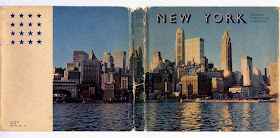Marie Šechtlová and the Sixties
A while ago, we were throwing out lots of things from our apartment. Objects with thin legs that were never at the right angle. Eggshell-like plastic chairs resting on flimsy bases made from iron bars. Surfaces made from colour fragments. Paper cylinders, and triangular ceiling lamps, decorated with geometric ornaments which gathered dust. They had all became symbols of uselessness, known as “Brussels style”. Perhaps we hated them because they were things that had once been trendy, but they had later turned out to be of limited use, and even worse, to have had an exceptionally short warranty. Why do we see those objects differently today? Why have all the former nostalgias been replaced by a new “retro” nostalgia for the 1960s? And what exactly do we see differently?
Maybe today we no longer use those objects, which have become rare due to their short life expectancy, and we now see their essence. Instead of functionality, we now see their beauty. Instead of flimsiness without substance, we suddenly see their soul, lying in the palm of our hand. In comparison with today’s decorativeness, imported from the West, the testaceous 1960s can remind us of a daring curve, reflecting Man’s first flight into space. We have enough distance now from these 1960s objects, not to expect functionality, and to be aware of their dream dimensions, in many ways closer to inter-war avant-garde. This similarity used to be kept hidden; today it is obvious.
The “Brussels style” reached one of its peaks in 1960s Czechoslovakia. It was everywhere; even in photography. Marie Šechtlová was one its proponents, even though her work had much wider scope. Her fame was possibly greater than that of photographers such as Eva Fuková, Běla Kolářová and Emila Medková, all wives of Prague artists. Her style was less Prague, and more European (or perhaps more accurately, Brussels). Especially her photomontage methods she shared with Eva Fukova. These two artists joined in 1966 in the creation of a book about New York (Eva Fuková, Miloň Novotný and Marie Šechtlová, New York, Prague, 1966). Marie showed herself to be a pioneer of colour photography, with her colourful time-exposures capturing the lines made by lights at night. This was unique at the time. Many of her other photographs depict her experiences from her hard-won trips abroad, especially to Paris, Brussels, Moscow and St Petersburg (Leningrad at that time).
At the heart of Marie Šechtlová’s work in the 1960s are the photographs and photomontages, which defined artistic photography at that time. Up till then, art photography was mostly about using complicated techniques to achieve the artistic impression. The 1960s brought a grittiness of hard black-and-white, reducing the greyscale, and increasing the contrast. Marie Šechtlová however chose a more delicate dialogue between grey softness and the clarity of darker contour. Her insight changed the human shape into art, with a result that was both natural and wonderful. The body shapes and shadows in her photographs are an analogy of the architectural and design lines that were in vogue at the time.
The history of Czech photography is pretty much the history of Prague photography. Tábor fulfils the imperative of the epoch: think globally, and act locally. One of the important parts of the Tábor whole, the Šechtl & Voseček studios, is having an intensive renaissance of the family tradition, and is one of foci of European photography. The spirit of the place echoes in Marie Šechtlová’s desire to experiment, because here exists the half forgotten tradition of the avant-garde Linie group, and of its photographical section Fotolinie. Shadow plays, photomontages and other experiments by such as Josef Bartuška and Karel Valter in the 1930s were based on a view of photography that was shared by Marie Šechtlová.
Another dimension of Marie Šechtlová’s creativity was the link with literature, especially poetry. Poet Jan Noha was inspired by her photography to write memorable verses, and she in return illustrated his Ode to South Bohemia.
The scope of Marie’s work extended from photomontages to street moments, and excelled in both domains. Surprisingly, the photomontages and street moments coexisted, did not interfere with each other, and could be employed as illustrations. Marie’s candid photography, inspired by the work of Henri Cartier-Bresson, loses nothing in comparison with the work of photographers such as Dagmar Hochová and Miloň Novotný.
No less admirable were the portraits and nudes created by Marie. Nude photography was just fighting its way through socialistic prudishness. Among the portraits, we find notable emigrants such as Josef Šíma and Jiří Voskovec. Marie Šechtlová’s work in the 1960s was remarkable, and ensures her an honoured place in the history of Czech photography.
See also
See also



























Geen opmerkingen:
Een reactie posten